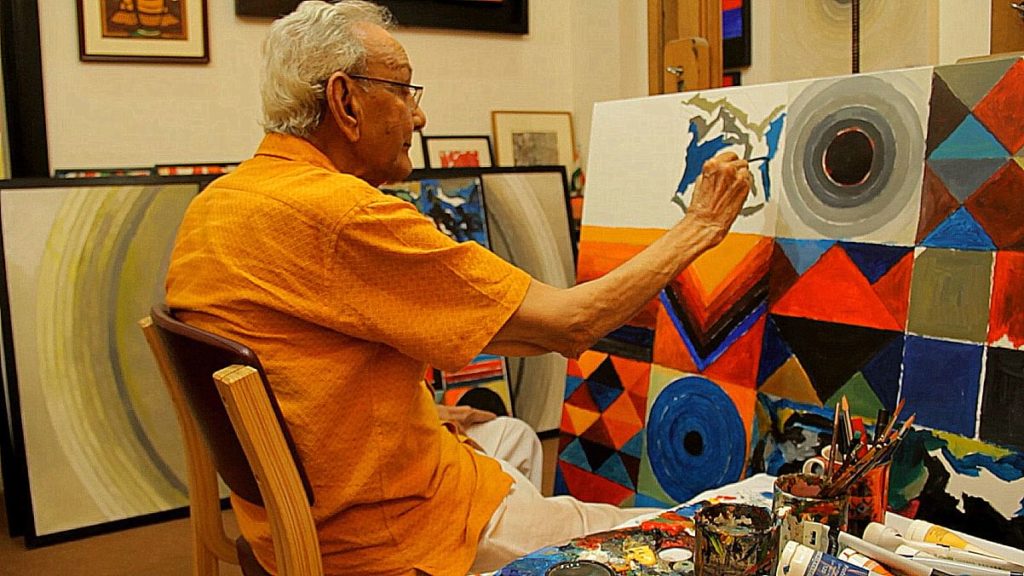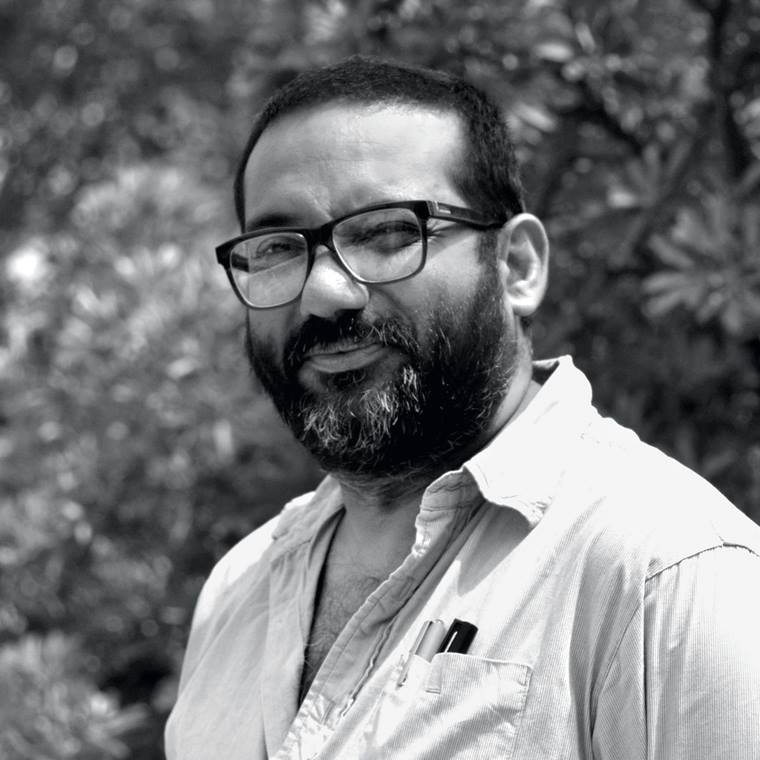Introduction
Born on February 22, 1922, in Babaria, Central Provinces, British India; Sayed Haider Raza was one of the six children of Sayed Mohammed Razi a deputy forest ranger of the Mandla District. S.H. Raza shows an early interest in drawings. At age 12, he was showing some skill for drawings and paintings and at 13 he moved to Damoh a district in Madhya Pradesh to complete his high school. After high school, he studied further at the Nagpur School Of Art followed by Sir J.J. School of Art, Bombay. After that, he moved to France in October 1950 to study at the Ecole Nationale Superieure de Beaux-Arts, Paris on the government of France scholarship.

Early career
He exhibited his first solo show in 1946 at the age of 24 at Bombay Art Society Salon, where he was awarded the silver medal of the society. His works evolved from painting expressionistic landscapes to abstract ones. His fluent watercolors of landscapes and townscapes executed in the early 1940s moved toward a more expensive language where he started working on painting landscapes of the mind.
The year 1947 proved to be a very important year for him. He co-founded Bombay Progressive Artists’ Group. This group was established to break the chain of European and eastern philosophy of art in India. The sole purpose was to change the role of art from classical bounded philosophy to the modern progressive artistic style.
In 1947, his father and mother died within a year. His brothers and sisters migrated to Pakistan after the Indian partition.
When we look upon his early career in paintings, we find a different kind of peace and tranquility that rejects tension and melodrama. It may be due to his peaceful childhood in the Kanha national park. Naturally, his childhood was solidified with nature and we see the effects on his works. Even when we look at the paintings created in Paris, we find the same tranquility and peace that we get in the earlier paintings. His paintings Tapovan and Saurashtra are rigid examples of his childhood experiences.
His relationship with nature was symbiotic- he found his creative muses in the spaces between the hushes silences of the nights and the stillness of the imposing trees.
Work and life in France
Once when he was in France, he started experimenting with currents of western modernism, moving from Expressionist modes towards greater abstraction and eventually incorporating elements of Tantrism from Indian scriptures. Raza’s arc of global recognition was running parallel to his own evolution as an artist. He started experimenting with his techniques and become more liberal with his brush. It was the time when he was free from any technique boundaries. His impasto paintings are getting more and more precise. In the year 1956, he was awarded Prix de le critique award. He was the first foreign artist to get that award. This award moves him to a company of some of the elite painters of his time i.e. Debre, Kito, and Buffet.
Even when he went to Berkeley in 1960, he encountered a range of surreal and abstract artists. Getting acquainted with these experimental art forms triggered the vast reserves of his childhood experiences.
When we talk about the influence of Janine Mongillat, his wife on his works then we see that his artistic style is becoming more liberal and expanding its boundaries in terms of techniques and artistic fulfillment. Although his wife was also an artist with a different style, he got a sense of inspiration from her works, and maybe due to their cooperative life he got the most exposure with the works she was doing as well as his own ideas. His conversations with his wife used to be intellectually stimulating.
His solitude and love for nature don’t finish in India, instead, it was with him in France. He chooses a village locality full of lush green trees and mountain views. In his later years, he started feeling the urge to return to India. When his wife died in 2002 he chooses to return to India. We can see his fondness for the country in his works where he uses the Devanagari fonts to write the name.
The Bindu and death
In 1970, he found himself in the deep thoughts of renovating his works. It was the time when he was extremely dissatisfied with his works and return to India. He traveled all over the main cities of India mostly Varanasi, Cave of Ajanta, and Khajuraho. He found inspiration in the shape of a dot which is called ‘Bindu’ in Hindi. This incident is directly connected with his childhood. Once he was having trouble focusing on the study then his teacher told him to focus on a dot. This incident consciously or unconsciously helped him finding the greater aspect of his life in later life.
In his later life, when he was in India- he uses to paint a lot and his lifestyle got dissolved in the art to such extent that he was living for the paintings and painting for the living. The concept of Bindu was that everything has been created from a dot and gets dissolve in that dot.
The concept was eternal for him and this concept gets solidified when he decided to bury in the place where he got birth. In 2016, he took his last breath and get buried in the Mandala district of Madhya Pradesh beside his father’s cemetery. He was born from the dirt of the Mandala and got into the same dirt.
His artworks and reputation are quite simple and low maintaining. All his life, he created works with passion and dedication, had a partner, and leaves this world with a foundation that helps young artists for the better. When we look upon his artworks throughout his life, we get the revolutionary changes of time in his works. They are not mere artworks but evidence of his thinking and life in the art world.
Awards and recognition
He was awarded the Padma Shri and Fellowship of the Lalit Kala Academi in 1981, Padma Bhushan in 2007, and Padma Vibhushan in 2013.
He was conferred with the Commandeur de la Legion d’honneur (Legion of Honour) on 14 July 2015.

Vikash Kalra is a self-taught artist and writer based in New Delhi whose work has been exhibited across India and is held in several private and corporate collections.